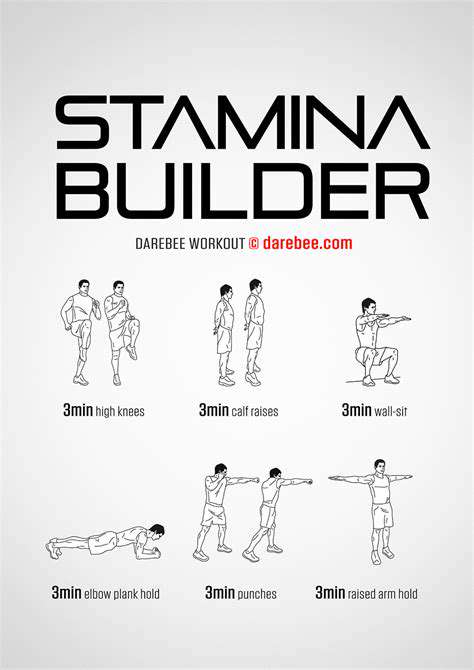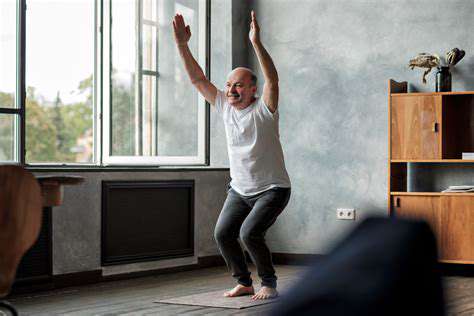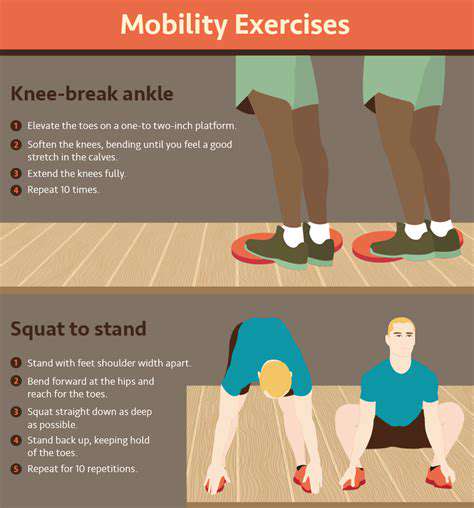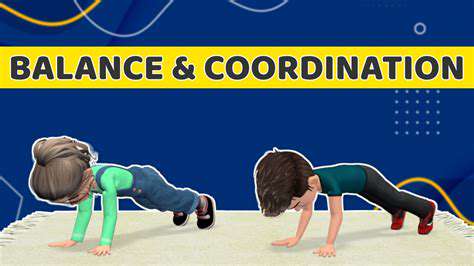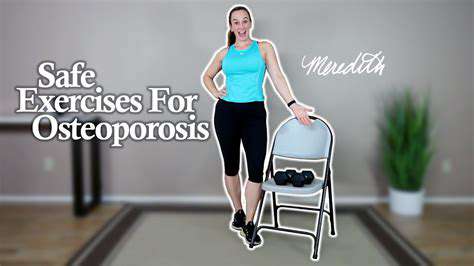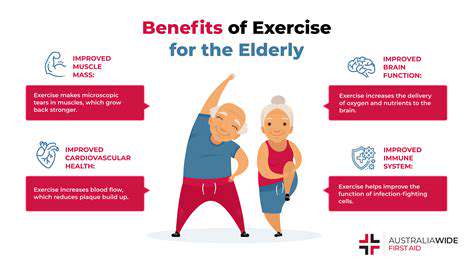Making Walking a Regular Part of Your Senior Lifestyle
Why Walking is Crucial for Seniors
Benefits of Daily Walks for Seniors
Incorporating daily walks into your senior lifestyle offers a wealth of physical and mental benefits. Regular physical activity, such as walking, can significantly improve cardiovascular health, reducing the risk of heart disease and stroke. It also strengthens bones and muscles, combating age-related decline and improving balance, which is crucial for preventing falls. Furthermore, walking contributes to maintaining a healthy weight, further enhancing overall well-being.
Beyond the physical advantages, walking fosters mental well-being. It provides an opportunity for stress reduction and improved mood, combating feelings of anxiety and depression. The fresh air and sunlight exposure associated with a walk can boost vitamin D levels, further contributing to a positive mental outlook. Engaging in a regular walking routine can even enhance cognitive function, potentially reducing the risk of age-related cognitive decline and improving memory.
Overcoming Potential Barriers to Walking
While the benefits of walking are undeniable, seniors may face various obstacles that prevent them from making it a regular part of their routine. These barriers can include physical limitations, such as joint pain or mobility issues. Fear of falling or concerns about safety in unfamiliar environments can also deter seniors from walking. Lack of motivation, social isolation, or simply a lack of accessible walking paths can also hinder the adoption of a walking routine. Addressing these potential barriers is crucial for encouraging seniors to embrace the positive impact of daily walks.
Fortunately, many of these barriers can be overcome with proper planning and support. Consult with a healthcare professional to discuss any physical limitations and develop a safe and effective walking plan tailored to individual needs. Joining a walking group or finding a walking buddy can provide social support and motivation. Exploring accessible walking paths or parks in the community can make walks more enjoyable and less daunting. Remember, small steps towards consistent walking are more effective than sporadic intense workouts.
Creating a Sustainable Walking Routine
Establishing a sustainable walking routine requires careful planning and consistency. Start with short, manageable walks and gradually increase the duration and intensity as your fitness improves. Finding a time of day that works best for you and incorporating walking into your daily schedule is key to making it a habit. Choose a comfortable route with pleasant scenery to make your walks more enjoyable and engaging. Consider using a pedometer or fitness tracker to monitor your progress and stay motivated. Remember to listen to your body and take rest days when needed, ensuring you don't push yourself too hard, especially in the beginning.
Consistency is crucial in forming a lasting habit. Make walking a regular part of your routine, whether it's a morning stroll, an afternoon walk, or an evening stroll. Celebrate your progress and acknowledge your achievements along the way. By integrating these strategies, seniors can successfully develop a sustainable walking routine that enhances their overall well-being and quality of life.
Tailoring Walking to Your Needs and Abilities
Understanding Your Baseline
Before diving into a structured walking routine, it's crucial to assess your current fitness level and any existing health conditions. This baseline understanding will help you tailor your walking program to your specific needs and abilities, ensuring safety and gradual progress. Consider your current activity levels, any limitations like joint pain or respiratory issues, and any doctor-recommended restrictions. A realistic assessment of your starting point will help you avoid injury and maintain motivation throughout your walking journey.
Knowing your baseline also involves understanding your goals. Are you aiming for improved cardiovascular health, weight management, stress reduction, or something else entirely? Identifying your specific goals will help you create a plan that's both achievable and motivating.
Setting Realistic Goals
Setting achievable goals is paramount to maintaining motivation and preventing frustration. Instead of aiming for an unrealistic daily mileage, focus on manageable increments. Start with shorter walks and gradually increase the duration or distance over time. Consistency is key, so aim for regular walks, even if they are short, rather than infrequent long walks.
Track your progress to stay motivated. A simple logbook or a fitness app can help you monitor your walks, noting the distance, duration, and any feelings or observations. This tracking allows for adjustments to your plan as needed, keeping you on the path toward your objectives.
Gradual Progression
A gradual increase in intensity and duration is essential to avoid injuries and ensure long-term adherence to your walking routine. Start with shorter walks at a comfortable pace and gradually increase the duration and speed as your fitness improves. Listen to your body; if you experience pain, stop and rest. It's better to take a break than to risk a serious injury.
Choosing the Right Footwear
Proper footwear is crucial for comfortable and safe walking. Invest in supportive athletic shoes that provide adequate cushioning and arch support. The right shoes can prevent foot pain, blisters, and other issues that can derail your walking routine. Regularly check the condition of your shoes and replace them when they start to wear out.
Incorporating Variety
To keep your walking routine interesting and prevent boredom, incorporate variety into your walks. Explore different routes, varying the terrain, and including hills or inclines. Varying your pace and intensity can also keep your body engaged and prevent plateaus in your fitness progress. This variety will help you discover new walking paths, enjoy the scenery, and stay excited about your exercise.
Considering Terrain and Weather
The terrain and weather conditions can significantly impact your walking experience. Choose routes that suit your abilities, considering the elevation and surface features. Adjust your pace and clothing based on the weather conditions to ensure comfort and safety. If it's raining or very cold, consider wearing waterproof gear and warm layers to stay comfortable. Also, be mindful of potential hazards like uneven surfaces or slippery conditions.
Staying Motivated and Consistent
Staying motivated and consistent with your walking routine requires a proactive approach. Find a walking buddy or join a walking group for social support and encouragement. Set reminders and use fitness apps to track your progress and stay on schedule. Reward yourself for achieving milestones, such as completing a certain distance or duration. Make walking a part of your daily routine, scheduling it in your calendar just like any other important appointment. This consistency will help you stick to your goals and reap the numerous benefits of regular walking.
Incorporating Walking into Your Daily Schedule
Why Walking Matters
Integrating walking into your daily routine isn't just about physical health; it significantly impacts mental well-being too. A brisk walk can reduce stress and anxiety, promoting a calmer and more focused state of mind. The rhythmic movement and fresh air can be incredibly therapeutic, offering a moment of quiet reflection and mental clarity in an often hectic world. This consistent practice can also contribute to improved sleep quality, a crucial aspect of overall health and productivity.
Furthermore, incorporating walking into your daily schedule is a simple yet powerful way to increase your overall activity level. Even short, 10-15 minute walks throughout the day can make a substantial difference in your calorie expenditure and help maintain a healthy weight. This sustained activity level also helps to strengthen your cardiovascular system, reducing the risk of various health issues in the long term. It's a low-impact exercise that's accessible to people of all ages and fitness levels.
Practical Strategies for Implementation
Successfully incorporating walking into your daily routine requires a strategic approach. Consider breaking down your desired walking time into smaller, more manageable chunks. For example, instead of aiming for a one-hour walk, aim for three 20-minute walks throughout the day. This approach can be more sustainable and easier to integrate into your existing schedule. Scheduling these walks in your calendar, like any other important appointment, can help ensure that you prioritize this healthy habit.
Another helpful strategy is to find walking buddies. Having a partner can make your walks more enjoyable and keep you motivated. Shared goals and accountability can significantly boost your commitment to this new habit. Walking with a friend or family member can also be a great opportunity to connect and spend quality time together.
Explore your surroundings! Find scenic walking routes, parks, or trails near your home or workplace. Varying your route and surroundings can keep your walks interesting and prevent monotony, making them a more enjoyable and sustainable part of your daily life. This exploration can also help you discover new parts of your community.
Overcoming Obstacles and Maintaining Consistency
Consistency is key when it comes to incorporating walking into your daily routine. One of the most common obstacles is finding the time. However, it is possible to weave walking into your existing schedule. Consider taking the stairs instead of the elevator, parking further away from your destination, or walking during your lunch break. Even short bursts of movement throughout the day can add up and contribute to your overall daily step count.
Another challenge is maintaining motivation. To overcome this, set realistic goals and celebrate your progress. Start small and gradually increase your walking duration or distance. Use a pedometer or fitness tracker to monitor your progress and stay motivated. Remember, consistency is more important than intensity; small, regular walks are better than infrequent long ones.
If you encounter setbacks, don't get discouraged. Simply get back on track with your walking routine as soon as possible. Adjust your schedule and find ways to fit it back in. View setbacks as opportunities for learning and adaptation. Remember that incorporating walking into your daily life is a journey, not a race, and consistency is key to achieving your goals.
Making Walking a Sustainable Habit

Embracing the Simplicity of Walking
Walking, a fundamental human activity, offers a surprisingly potent pathway to sustainable living. Integrating this simple act into your daily routine can yield significant benefits, both for your physical and mental well-being, as well as for the environment. It's a readily accessible form of exercise that requires minimal equipment and can be incorporated into virtually any lifestyle. Walking fosters a sense of calm and connection to your surroundings, allowing you to appreciate the beauty of nature and the vibrancy of city life.
The positive impact of regular walking extends far beyond the immediate physical rewards. By choosing to walk instead of driving, you're actively reducing your carbon footprint and contributing to a healthier planet. This conscious choice, repeated consistently, strengthens your commitment to environmental sustainability.
Overcoming Barriers to Walking
While the advantages of walking are numerous, some individuals may face challenges in integrating it into their daily lives. These barriers can range from lack of time constraints to concerns about safety, weather conditions, or even a general lack of motivation. However, these barriers can be overcome with careful planning and a supportive mindset. Finding walking routes that suit your needs and preferences, such as choosing scenic paths or joining a walking group, can significantly increase your enjoyment and motivation.
Implementing small, manageable changes, like parking further away from your destination or taking the stairs instead of the elevator, can gradually build walking into your routine. Overcoming initial hurdles and creating a sustainable walking habit often involves a gradual process of adjustments and finding what works best for your individual circumstances.
Sustaining Your Walking Journey
Maintaining a consistent walking routine requires dedication and a proactive approach. Keeping a walking journal to track your progress, setting realistic goals, and rewarding yourself for meeting milestones can significantly boost your motivation. It's crucial to listen to your body and adjust your routine as needed, ensuring that you're neither overexerting yourself nor becoming discouraged by setbacks. Consider incorporating walking into your social life by joining a walking club or inviting friends to walk with you. This can turn a solitary activity into a shared experience, making it more enjoyable and sustainable in the long run.
Building a routine around walking is a powerful way to integrate it into your lifestyle. Establishing a schedule, incorporating walking into your daily tasks, and recognizing the positive benefits will help you make walking a natural part of your routine.
